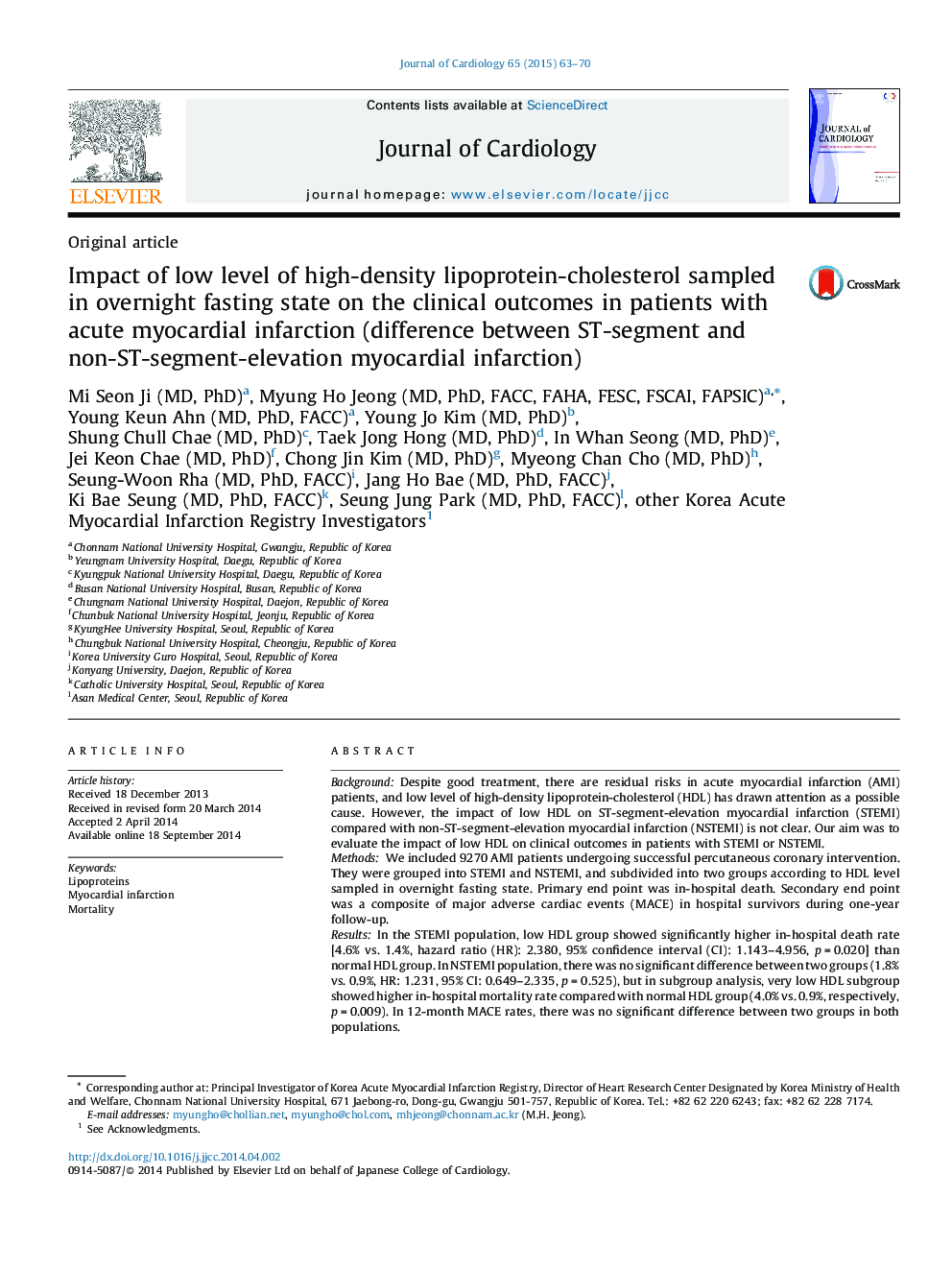| Article ID | Journal | Published Year | Pages | File Type |
|---|---|---|---|---|
| 5984011 | Journal of Cardiology | 2015 | 8 Pages |
BackgroundDespite good treatment, there are residual risks in acute myocardial infarction (AMI) patients, and low level of high-density lipoprotein-cholesterol (HDL) has drawn attention as a possible cause. However, the impact of low HDL on ST-segment-elevation myocardial infarction (STEMI) compared with non-ST-segment-elevation myocardial infarction (NSTEMI) is not clear. Our aim was to evaluate the impact of low HDL on clinical outcomes in patients with STEMI or NSTEMI.MethodsWe included 9270 AMI patients undergoing successful percutaneous coronary intervention. They were grouped into STEMI and NSTEMI, and subdivided into two groups according to HDL level sampled in overnight fasting state. Primary end point was in-hospital death. Secondary end point was a composite of major adverse cardiac events (MACE) in hospital survivors during one-year follow-up.ResultsIn the STEMI population, low HDL group showed significantly higher in-hospital death rate [4.6% vs. 1.4%, hazard ratio (HR): 2.380, 95% confidence interval (CI): 1.143-4.956, p = 0.020] than normal HDL group. In NSTEMI population, there was no significant difference between two groups (1.8% vs. 0.9%, HR: 1.231, 95% CI: 0.649-2.335, p = 0.525), but in subgroup analysis, very low HDL subgroup showed higher in-hospital mortality rate compared with normal HDL group (4.0% vs. 0.9%, respectively, p = 0.009). In 12-month MACE rates, there was no significant difference between two groups in both populations.ConclusionsLow HDL was associated with significantly higher risk of in-hospital mortality in STEMI patients, but not in NSTEMI patients. Thus, more aggressive treatment should be considered in STEMI patients with low HDL.
